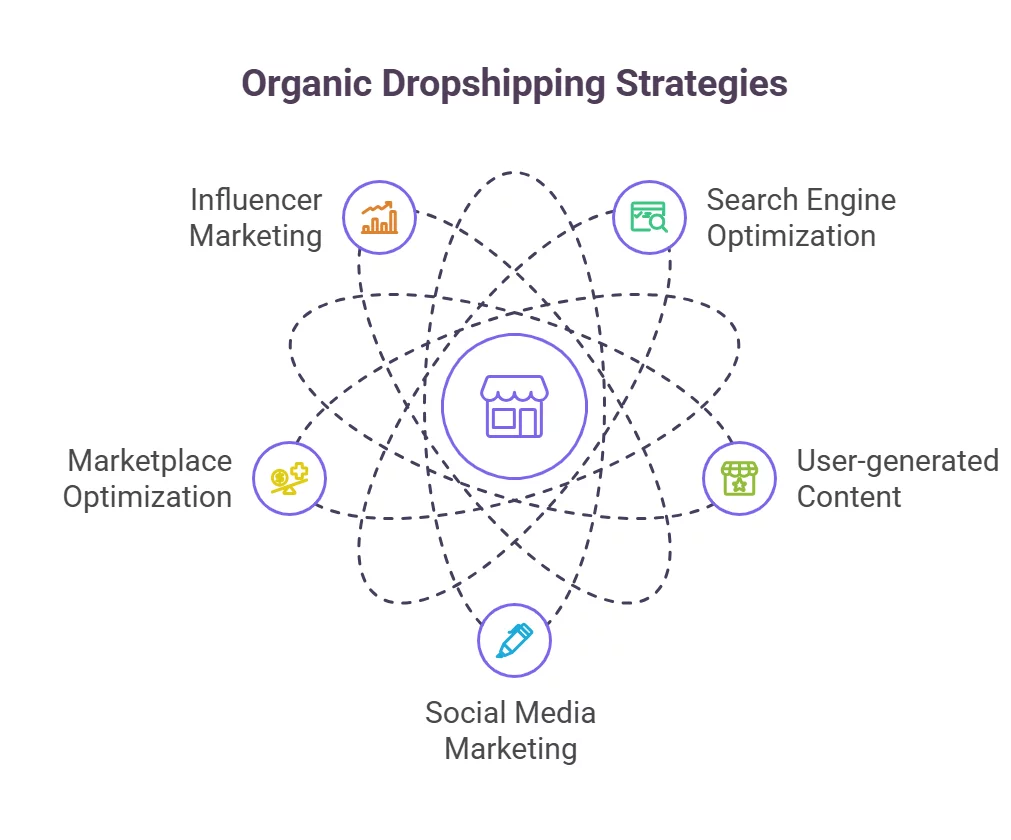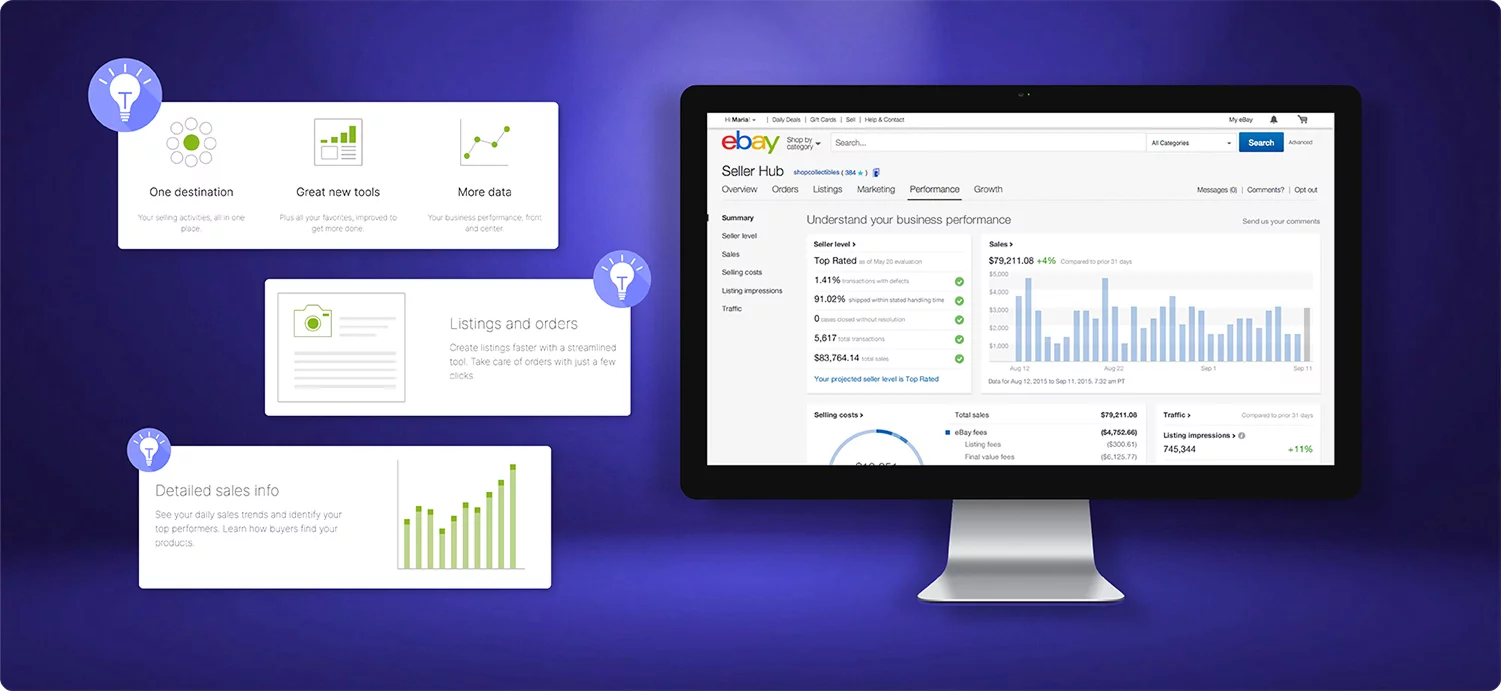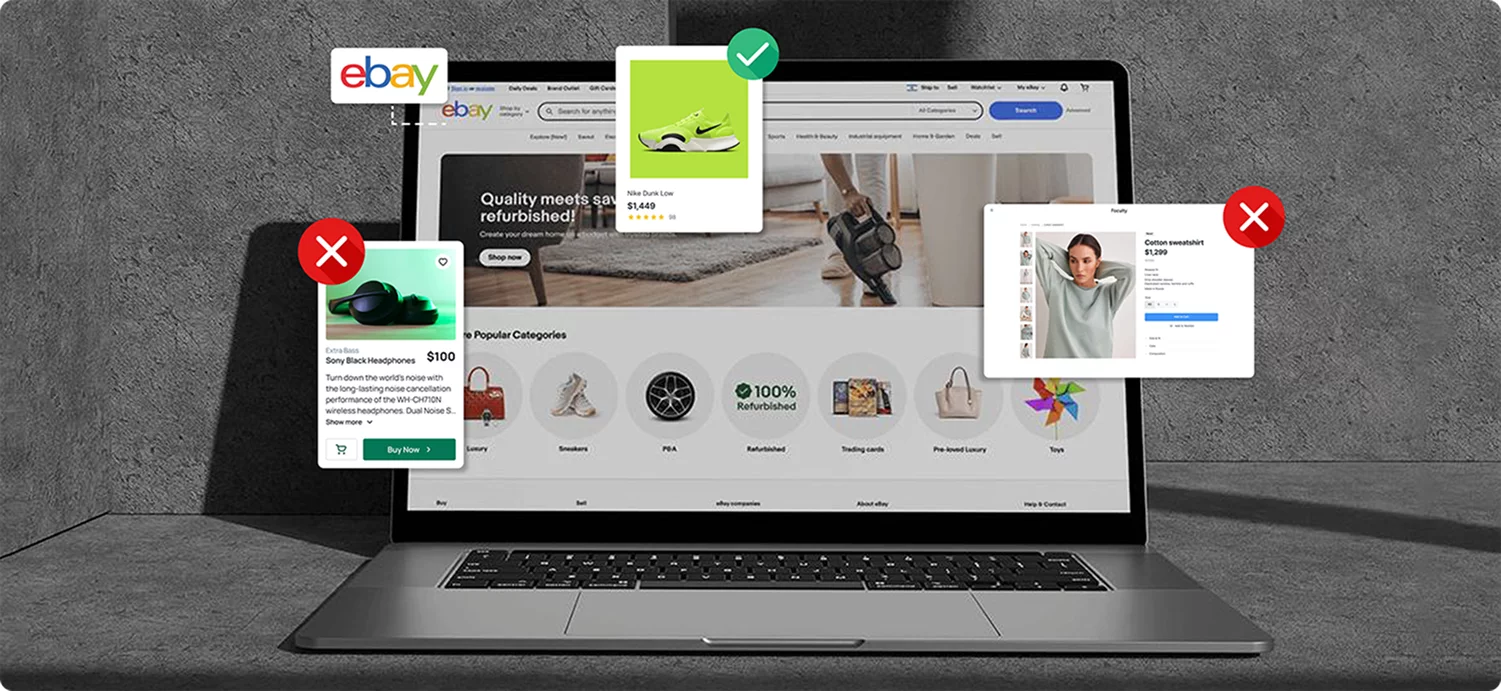No matter how compelling your ads are, many users will roll their eyes at a “sponsored” tag and scroll past, taking their clicks elsewhere. As a dropshipping seller, online traffic is the lifeblood of your business, and there’s nothing like organic content to help you boost it.
The top three organic results get more than half the first page clicks in Google searches. Aside from increasing traffic, organic content also reduces dependency on ads, helping you create a more sustainable, self-sufficient strategy for long-term growth.
Of course, crafting an organic content strategy isn’t without its challenges. It takes significant time, effort, and creativity, but the payoff—a loyal audience and steady growth—is worth it.
What is organic dropshipping, and does it really work?
Organic dropshipping is a marketing strategy that involves promoting products organically via various online channels. It follows the typical dropshipping model: selling products without actually owning inventory or fulfillment (which is entirely managed by a supplier) and making a profit by marking up the supplier’s price.
The key distinction is how you market the products to the target audience. Sellers create and distribute content organically through social media channels, search engines, and marketplaces. They may leverage Search Engine Optimization (SEO) to improve search results and Marketplace Optimization (MPO) strategies to enhance visibility in a specific marketplace.
Platforms like eBay drive organic traffic to your storefront through both internal searches (within the marketplace) and external search engine results. If all the engagement is natural and not boosted through paid promotions, this counts as organic dropshipping, too.
Organic dropshipping helps sellers showcase their products more genuinely and transparently, which increasingly more users appreciate. It’s also a low-cost, low-risk strategy. Paid ads can eat up your marketing budget—and that’s if you have one to begin with. With an organic model, you can create a sustainable marketing plan and invest in other business areas.

Paid vs organic dropshipping: Which one is best for you?
Both paid and organic dropshipping have pros and cons, so your decision should be based on business priorities. Organic dropshipping is ideal for sellers with lower budgets as there is a lower cost to creating or distributing the content.
However, the trade-off is time; building up your content and establishing credibility online takes longer. You must continuously keep up with optimization trends and adjust your content strategy accordingly. On the flip side, organic dropshipping yields more sustainable, long-term results. Unlike paid content, its success doesn’t rely on continuous cash injections and tends to improve over time as you build your content and online presence.
With paid dropshipping, you need to invest a reasonable amount of money to get paid ads up and running on your preferred platforms. However, this investment gives you a much quicker visibility boost. Plus, you can define your target audience based on categories like demographics and location, reaching those most likely to convert. You also have access to detailed performance metrics to monitor your ROI.
Regardless of your preferred path, having a mix of paid and organic content is advisable. Many sellers use organic content to test what resonates with their audience and convert top-performing posts or pages into paid ads for maximum chances of conversion. Organic content is always king for long-term, continuous growth.

The Guide to organic dropshipping success in 7 simple steps
1. Build a social media community
Having an active social media presence can boost dropshipping sales by 32%. To kickstart your socials, you can:
- Collaborate with micro-influencers or other brands to reach more people, build credibility, and draw in audiences who may not yet be familiar with your brand.
- Use platform analytics (or tools like Google Analytics) to track your social media performance. What’s working? What’s not?
- Develop 3-5 content pillars or themes that align with your brand and audience interests. This approach creates consistency and helps you plan content in advance.
- Aim to provide value to your audience through blog posts or video tutorials. Don’t forget to maintain a consistent tone of voice—this reinforces your brand identity and builds trust.
2. Take an audience-centric approach
It’s essential to periodically review your target audience, their preferred channels, and the type of content they find interesting. For example, Facebook and TikTok have very different audiences, so focus on the platforms where your customers are most active. Put yourself in your customers’ shoes to ensure you understand your audience:
- What could they be searching for?
- What do they care about the most?
- What can they live without?
- What will make them buy from you and not a competitor?
This initial research will be invaluable to any marketing strategy you implement. Beyond the research stage, actively nurture customer relationships by responding promptly to messages and engaging with followers frequently.
3. Harness TikTok Shop
If you’re not yet leveraging TikTok’s e-commerce feature, you might miss out on a vast #TikTokMadeMeBuyIt Gen Z user base. According to TikTok’s research, 1 in 2 UK users frequently purchase products they’ve discovered on this app.
TikTok Shop enables seamless user journeys by blending product discovery, marketing, and payment transactions in one app. Top tips for generating organic sales on TikTok include:
- Create shoppable videos.
- Host live shopping events.
- Collaborate with professional TikTok content creators in the affiliate program.
- Leverage trendy hashtags, popular music, and challenges or polls to engage your audience.
Users who like your product can move straight through your unique in-app store with one click. Customize this store with your branding and use compelling copy and imagery to optimize your chances of conversion.

4. Leverage user-generated content
What if you could have your customers indirectly help with sales outreach? Encourage your users to create content by running contests and challenges (the prize should be enticing enough for them to want to put in the effort!). You can also ask them to share a video review of your product in exchange for a discount on the next purchase.
Create a branded keyword and encourage users to use it. This strategy will make it easier to spot UGC content that pops up and develop a stronger sense of community online. You can then reshare this content on your company accounts, use it for email marketing, add it to your product landing pages, or even turn it into paid ads.
5. Focus on SEO
SEO tools like SemRush provide automated workflows for keyword research, website audits, and content management—suitable for SEO novices and pros alike. Better yet, these tools offer comprehensive tutorials on how to use their capabilities.
Once you have established your target keywords, develop a content strategy for your blog and other website pages. The optimal approach is to create new content to generate organic traffic rather than optimizing existing content for SEO. Search engines tend to favor fresh, relevant material.
6. Sell on eBay
With a mind-boggling 133 million active buyers spread across 190 markets, eBay remains one of the world’s most popular marketplaces for dropshipping. To maximize your sales on this platform, you can consider Amazon-to-eBay dropshipping, which enables you to list Amazon products on your eBay store and fulfill orders from Amazon directly to your eBay buyer.
However, the process can quickly become overwhelming. Monitoring eBay listings, purchasing Amazon products, and manually fulfilling each order isn’t feasible or scalable.
Dropshipping automation software like Yaballe can streamline time-consuming and detailed processes such as listing updates and inventory management. Yaballe also supports Amazon-to-eBay dropshipping, enabling you to automate next-to-real-time price and stock synchronization, order fulfillment, and tracking updates.

7. Optimize your listing
One outdated listing with rubbish copy and product photos that look like they were taken with an iPhone 7 (remember those?) is all it takes for users to turn away. Optimizing your listings is essential to attracting users and driving sales.
Start by defining the keywords that most resonate with your customers so you can embed them throughout the copy and other on-page elements. Craft a catchy product title and write engaging solution-focused descriptions highlighting key features and benefits. Lastly, optimize high-quality, well-lit product photos for SEO (hello alt text).
Of course, doing this across dozens or hundreds of product listings would take forever, and we all have a limited time on this earth. The best dropshipping platforms, like Yaballe, include built-in support for bulk listing optimization. Ready-made, proven templates and collage makers help you create attractive listings with zero effort. Plus, Yaballe’s auto-listing features include a VeRo scanner that alerts you if a specific product or supplier might negatively impact your store.
Scale dropshipping operations with Yaballe
Any dropshipping seller aiming for sustainable, long-term success must take organic content seriously. Beyond SEO and MPO, an easy win that can prove incredibly fruitful for your marketing efforts is acing customer service.
Fully integrated dropshipping platforms like Yaballe help you manage all aspects of your online store across marketplaces (including Amazon, eBay, AliExpress, and many others) to maintain the highest order fulfillment standard while scaling operations.
With Yaballe, you can list unlimited products to eBay with a single file upload, automatically monitor product availability, and quickly fulfill thousands of orders. Happier customers lead to better reviews and higher engagement, effortlessly driving organic traffic and improving conversions for your store.
Find out more about Yaballe to start scaling your Amazon-to-eBay dropshipping operations today.





